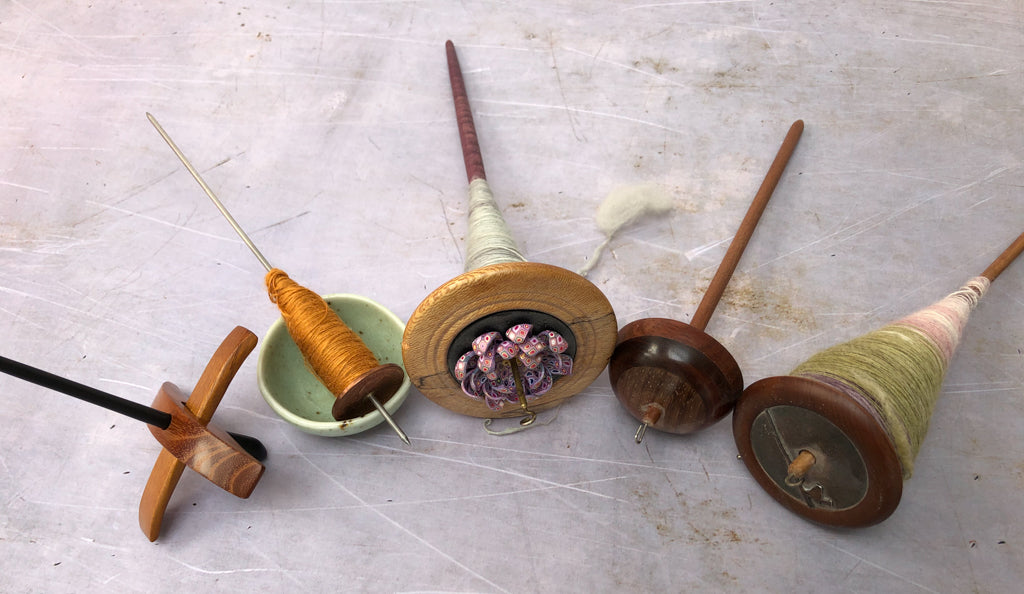
Which spindle?
I get asked a lot of questions about drop spindles at shows, and in emails. Because they come in lots of different shapes and sizes, sometimes knowing how to choose a spindle to start with can be intimidating. Do you choose a drop spindle or a supported spindle? Top whorl or bottom whorl? Turkish or Akha?
The more questions you ask, the more there seem to be. I thought I would do a short series of posts on the whys and wherefores of spindle selection. This first one will go into the basic differences between drop (or suspended) spindles and supported spindles.
Drop Spindles
A drop spindle can come in many different shapes and sizes, but all drop spindles share one feature – they spin while hanging from the length of yarn to which they are adding twist. This means that the weight of the spindle adds tension to the yarn. Tension is necessary when spinning because without it the twist can't distribute itself along the fibre.
The finer the yarn, the less weight it can bear. It's also important to remember that with a drop spindle, you are adding weight each time you wind the yarn on. Eventually, this weight will change the dynamics of the spindle, and you have to adjust to this as you go along.
Drop spindles are generally used to spin worsted yarns with longer staple fibres, e.g. wool or alpaca. This is because worsted spinning techniques such as the short forward draw are easier to use with drop spindles, as both your hands are free, most of the time, to occupy themselves with the fibre. One hand holds the fibre, the other draws it out ready to accept the twist.
Drop spindles can have whorls at the top, bottom and in the middle. I'll go into what difference this makes in a later post.
Supported Spindles
As with drop spindles, there are many types of supported spindles, but all support spindles have the same basic thing in common - they spin while their base is supported on a surface. This surface can be the floor, a bowl or stand, or a table top. The whole weight of the spindle is borne by the surface on which it sits, and not by the yarn to which it is adding twist.
Supported spindles are usually used to spin woollen yarns with short staple fibres, e.g. cotton, cashmere, yak. The fact that the spindle is supported means that short or fine fibres won't be dragged down by the weight of the spindle. The necessary tension is provided by the spin itself, and consequently the long draw technique uses the tension of this spin to draw out the fibres while the hand holding the fibre supply moves away from the point of the spindle.
I'll go into the different support spindle styles in a later post. There's a lovely article here that goes into a short history of the spindle, if you'd like to know a little more about their evolution.
I hope that was helpful to start with – please ask questions if you have any!

